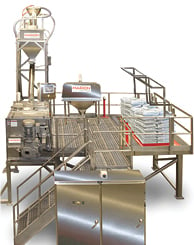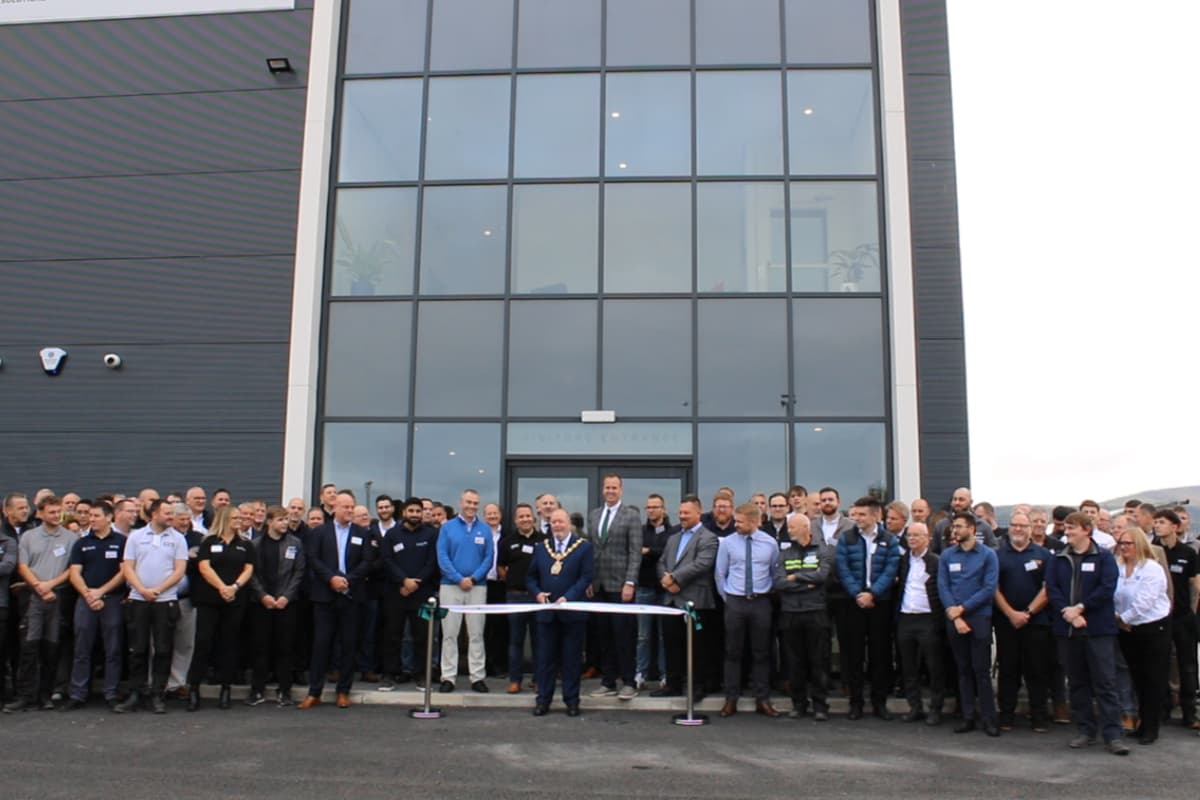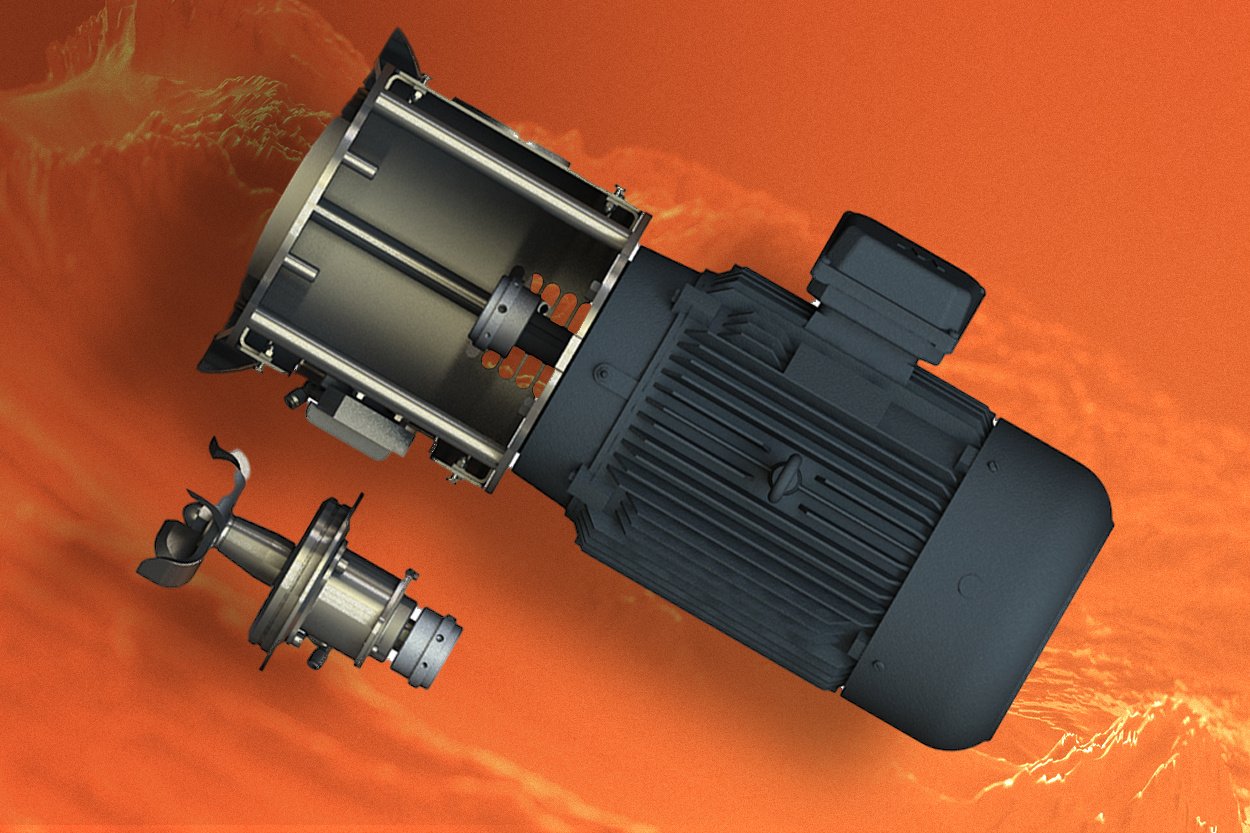5 Tips for Choosing the Right Thermal Processing Technology
Choosing the right thermal processing equipment is a decision that will affect your production line for decades. It’s not just about the immediate capital cost of the machine, which represents a significant investment, but the long-term costs that need to be factored in as well. Industrial ovens, coolers, microwaves and dryers can last 20 or more years. Your choice of thermal processing equipment affects the quality of the materials produced, operational costs of the plant, product costs, safety of the workers and the potential for material loss during the process.
Following are the top five considerations in choosing the right thermal processor for your needs:
- Drying temperature range
- Temperature control
- Costs and efficiency
- Throughput
- Special requirements for specific types of materials
This blog digs deeper into each of these areas and discusses the different types of drying and thermal processing technology available for each one.
Drying Temperature Range

Thermal processing can range in temperature from –58⁰F (–50⁰C) all the way up to 5400⁰F (3000⁰C). For metals, glass and industrial materials, the high-temperature range is the only way to go. However, when dealing with foods, pharmaceuticals, biomass and other consumer packaged goods, the subtlety of the range is quite important.
Using a temperature that is too high can cause damage affecting the quality, nutritional value or aesthetics of materials. On the other hand, when the temperature is too low, the desired chemical reaction (roasting, melting, fusion) may not be triggered properly. Also, using a low temperature generally means longer processing times. For example, biomass products, such as hemp, have been traditionally dried by hanging them up in large facilities and allowing them to be dried by the ambient air. This can take days or weeks. On the one hand, there is low risk of losing biomass due to overheating, but it’s incredibly time-consuming, space-dependent and can introduce other unintended consequences such as mold or uneven drying of the product. Industrial drying allows for much faster and lower-cost production of a variety of products.
External heating methods such as air and fluid dryers vary dramatically in their temperature ranges. Every model and every manufacturer has specifications for the equipment. Low-temperature drying can be attained by air or sun drying, but for most industrial purposes, freeze drying and microwave drying are more appropriate. Vacuum technology can also be used in conjunction with air drying or microwave, in order to provide lower temperature drying. It also reduces the boiling point of the water in the material being heated, resulting in the ability to dry materials faster without damaging them. Adding vacuum to a thermal process provides two main benefits. Firstly, vacuum pressure creates a stable operating environment, and secondly, it increases the uniformity and speed of the drying process. In thermal applications, some manufacturers have added vacuum to achieve breakthrough results in drying at lower temperatures.
Temperature Control
For many thermal processing applications, precise heating is essential to the overall quality of the finished product. In other instances, precise heating may not be essential to the material being processed, but it can save time and costs. Very few methods can provide highly controlled environments as well as the ability to quickly and immediately adjust the temperature, because most thermal processing methodologies use air or fluid (indirect) heating processes.
 Microwave is the main precision heating method used widely today in thermal processing. Microwave is a direct heating method, which means the energy transfer is direct to the material and is affected at the molecular level, rather than by encountering air or fluid and heating from the outside in. Microwave can offer exacting results for two reasons. First, microwave heating stops and starts immediately with the switching on and off of the transmitter. Ovens and air heaters need ramp up time to be heated and cooled, so cycling off the heat source does not immediately stop the heating. Secondly, temperature sensors in a microwave dryer are not measuring ambient temperature; rather they measure only the actual temperature of the material being heated. For that reason, thermal processing is extremely accurate and can be maintained in a very narrow temperature spectrum.
Microwave is the main precision heating method used widely today in thermal processing. Microwave is a direct heating method, which means the energy transfer is direct to the material and is affected at the molecular level, rather than by encountering air or fluid and heating from the outside in. Microwave can offer exacting results for two reasons. First, microwave heating stops and starts immediately with the switching on and off of the transmitter. Ovens and air heaters need ramp up time to be heated and cooled, so cycling off the heat source does not immediately stop the heating. Secondly, temperature sensors in a microwave dryer are not measuring ambient temperature; rather they measure only the actual temperature of the material being heated. For that reason, thermal processing is extremely accurate and can be maintained in a very narrow temperature spectrum.
Microwave can also be used for applications that require a change in temperature during the process. Continuous drying methods can also achieve temperature changes, however it requires the materials to pass from one part of the dryer to the next on a conveyor belt, whereas one microwave machine can be used for multiple stages in a process.
Examples of applications where precision temperature is key include pharmaceuticals, nanomaterials, nutritional powders and supplements, and chemicals that are heat-sensitive.
Another benefit of tight temperature control is the optimization of the speed and increased cost efficiency gained by using just the right temperature. By maintaining the correct material temperature throughout the process, power requirements can be easily dialed in, which shortens the processing time to a minimum while reducing transfer thermal energy loss found in most indirect heating methods.
Costs and Efficiency
Obviously, using just the right amount of heating or cooling means a reduction in energy costs. Other aspects of efficiency that can be equally as important include:
- Footprint of the equipment. Thermal processing equipment using air drying generally requires a larger footprint and additional space around it to ensure the safety of personnel as well as avoiding damage to other equipment in the area.
- Efficiency of heating method. Faster methodologies, such as microwave, can reduce energy needs while increasing throughput. Significant time savings means higher profitability.
- Avoiding wastage. Burning, case hardening and overheating can cause loss of materials or poor quality results. Such mistakes can be costly and tend to be common with certain types of indirect heating, in particular when there is a temptation to reduce processing times by simply turning up the heat.
- Maintenance, cleaning and replacement parts. When choosing production equipment, it’s important to consider the cleaning and long-term maintenance needs of the equipment. For instance, when processing food, daily and sometimes between-batch cleaning is essential, so the equipment needs to be easy to access and sanitize. An example of high maintenance cost can be found in the tendency of spray dryers to need nozzle replacements regularly.
- Startup and shutdown costs. Some large industrial dryers need to be shut down and cooled periodically for maintenance and cleaning. Startup and shutdown times are part of the loss of efficiency in the production line.
Because most thermal processing equipment requires considerable capital investment, there is usually a tendency to do a cost comparison of the initial purchase, installation, and configuration. However, given the useful life of this equipment is typically decades, it’s much more important to consider the total operating costs described above. Savings on the equipment purchase up front is unlikely to compensate for the day-to-day losses in choosing the wrong equipment for the application.
Throughput
Every application has different requirements for the throughput of the materials. It seems obvious that faster processing of higher quantities is better, but that may not be the case in all situations. For example, when additional processing or packaging is needed, maximum throughput may have outside constraints. In finish drying applications, the needs may be occasional or low quantity.
Generally speaking, when it comes to considering throughput, there are two main options:
- Continuous thermal processes typically use a conveyor belt configuration in order to heat materials or items that pass through them. Generally, the objective is quantity over quality in continuous applications.
- Batch thermal processes, as the name implies, process one batch at a time. Usually tighter control over the operating environment is critical to delivering high-quality dried materials in batch processes.
Both continuous and batch thermal processing equipment come in variable sizes and capacities to match the throughput needs for your application.
Special Requirements for Specific Types of Materials
At the end of the day, your thermal processing equipment should be designed to handle the specific demands of one type of application―yours. This article can’t cover every potential specialty need, but following are some examples of specialty requirements:
- Maintaining flavor, color and nutritional value for food and food ingredients
- Salty and corrosive materials need contact surfaces that can withstand corrosion
- Sticky and viscous materials require thermal heaters that use agitators or other means of keeping the material from clumping and sticking
- Materials that need to be dried in certain shapes, cakes, or layers are limited to certain types of thermal processors, such as flash dryers, microwaves, or conveyors
- Microbial reduction and sterilization require specific types of precise heating methods that are highly repeatable
In assessing thermal processing technology, make sure the equipment manufacturer understands exactly the material and operating requirements necessary, and if possible, provides samples for testing and analysis to verify the desired results can be attained.
Conclusion
As with any other decision, checking out your options and working with experts is essential. Most manufacturers can provide testing facilities to help you can gain accurate data on exactly how a machine will perform on your specific materials. Make sure to do tests under a variety of conditions so you can optimize the machinery for your processing line.
Finally, no matter what technology you choose, make sure it’s one that will be able to adjust if needed for the changing demands of your industry. If you’re in a highly competitive market that is likely to require product innovation to maintain your advantage, it’s essential to use thermal heating processes that will be able to adapt to the changing industry needs.
For even more information on thermal processing, check out our Thermal Processing Handbook or contact us today so we can help test your application.


